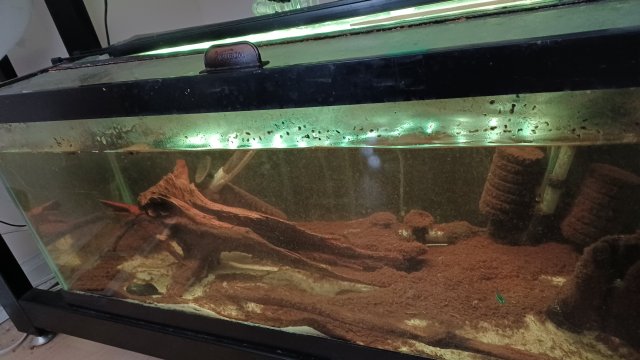.
I know that you aren't an African cichlid guy, but the reality is if/when structure to defend is removed, such as rocks, wood, etc, it removes the vast majority of aggression. This is actually used by collectors/exporters and even breeders as a manner in which to reduce fighting, injury and deaths. I discuss that in my bloat sticky and a collector on Lake Tanganyika that I used to converse with.
Most hobbyists don't like the aesthetics of a bare tank, which is why one seldom sees this type of set up. The structure, and lack of space required is what creates the high aggression levels in many species of African cichlids.
Sometimes what we feel is most natural
and humane for our fish in captivity, is not reality for the fish.
I'm definitely not...and I suppose I should keep my yap shut about them for that reason.

I try not to listen to and parrot the "common wisdom" about topics with which I am personally unfamiliar, just so that I don't make blunders like this one. I guess that providing all that structure simply produces more prime hiding spots to fight over in the cramped confines of an aquarium?
I definitely agree that "natural" isn't always the same as "best" when it comes to keeping animals in captivity. I think this is mostly a result of not properly analyzing and considering all the details of what "natural" really entails; such things as the animal protein which is consumed by fish that outwardly appear to be eating only aufwuchs/algae.
In any case, methods used commercially to safely jam the maximum number of fish into X cubic inches of space, or to grow the maximum poundage of fish flesh in the absolute minimum time for the absolute minimum dollars spent...are obviously effective. Perhaps many people like to think of their home aquariums in the same light, but I would hazard to guess that most aquarists want to enjoy something that they can delude themselves into believing is akin to "natural".
I guess a perfect example of this is the commercial catfish feed pellets used to raise cats for market. I once assumed that they would be nutritionally perfect, but
 thebiggerthebetter
thebiggerthebetter
documented a big improvement in the condition and longevity of his fish when switching from this type of food to hobby-grade pellets, which are geared towards complete long-term nutrition rather than grow-'em-up-fast-for-harvest efficiency...better than natural, at least in the short term.
For me at least, I just have a difficult time thinking of living creatures as mere machines that can be tuned and analyzed to run with perfect efficiency. A man-made machine can be fully understood and optimized for maximum performance. The natural machine that is a living organism will never be understood that perfectly and completely, so attempting to mimic "nature" just seems to be my default thought setting.
I would say some corny joke about sucking wood but I can't think of any
Actually, it sounds as though you can...




